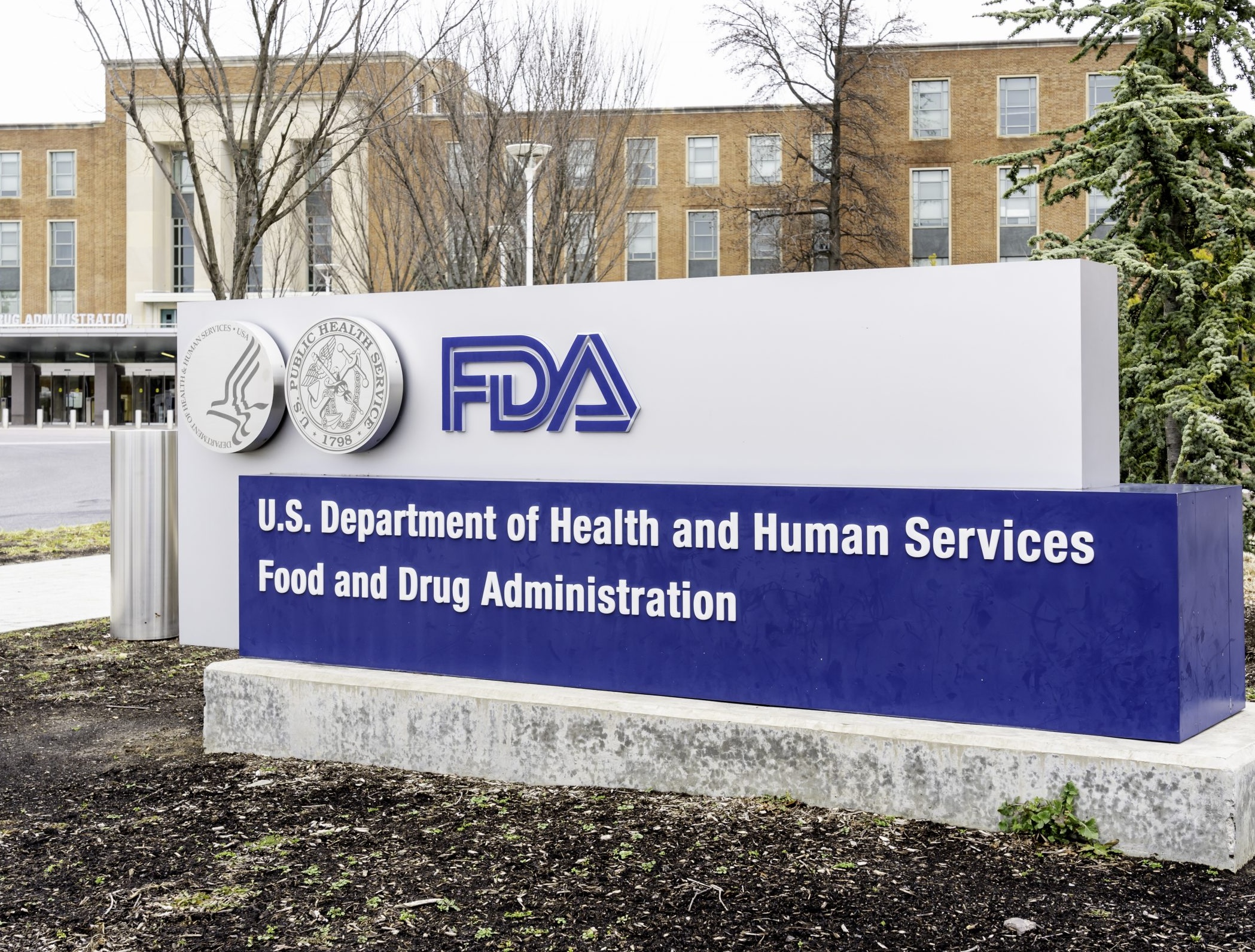Introduction: Nothing stings quite like a regulatory refusal in the high-stakes world of drug development. A company spends years and millions to bring a product to market—only to be handed a dreaded letter spelling out why their carefully crafted dossier isn’t good enough. But behind each refusal lies a story, often a drama of scientific missteps, overconfidence, and lessons painfully learned. In this narrative, we revisit a series of real-world registration failures – cases where pharmaceutical product applications were rejected not for fraud or malfeasance but for scientific and technical shortcomings. Each case is a cautionary tale of what went wrong and what it teaches us about the rigor required to pass muster with regulators.
The Generic that Couldn’t Prove It: Budesonide Sun’s Misty Miscalculation
In 2019, Sun Pharma set out to register Budesonide Sun, a generic nebulizer suspension of the corticosteroid budesonide for asthma. The product aimed to emulate AstraZeneca’s Pulmicort Respules, delivering a fine mist of steroid to wheezing children and adults. By all appearances, it was a straightforward generic of a well-known drug. Yet, when the Dutch authorities led a European review, clouds gathered. Doubts surfaced about whether Sun’s formulation matched the original’s once-aerosolized performance. Specifically, lab tests failed to demonstrate that the amount of budesonide reaching patients via nebulisation was equivalent to Pulmicort’s. The UK and Italy pressed the alarm: How can we trust the same therapeutic effect if you can’t prove the same delivered dose?
Regulators ultimately refused to approve Budesonide Sun, and their reasoning was as clear as a puff of nebulized air: equivalence to the reference product had “not been shown.” The European Medicines Agency’s assessment pulled no punches—the generic’s benefits did not outweigh its risks because the company hadn’t convincingly demonstrated it would behave the same as Pulmicort in a nebulizer. In hindsight, one imagines Sun’s team might have been overly optimistic. They perhaps assumed that matching the solution’s composition was enough, neglecting the subtleties of aerosol physics. Maybe they relied on a coarse in-vitro test when a more robust particle size distribution study was needed. The human factor here could be underestimating the complexity of inhaled generics. The consequence was a hard stop: no approval and a delay in bringing lower-cost asthma therapy to patients. The lesson? Even a generic must nail the science of equivalence. Especially for complex delivery systems like nebulisers, you must prove that each dose the patient inhales is, in effect, the same cloud of medicine as the original. Regulators demand rigorous evidence, not just good intentions.
Sticky Formulation, Slippery Slope: The Remoxy ER Saga
Our next tale takes us into the world of opioid analgesics and a formulation that was supposed to be “unbreakable.” In the mid-2000s, a small company, Pain Therapeutics (now Cassava Sciences), developed Remoxy ER, an extended-release oxycodone capsule with a twist: the drug was suspended in a thick, sticky gel, supposedly making it difficult for addicts to crush, inject, or snort. It was a timely idea – an abuse-deterrent opioid – and initially attracted partners like King Pharmaceuticals and Pfizer. But the path to approval turned into a saga of repeated setbacks. Remoxy’s new drug application (NDA) was rejected not once, not twice, but multiple times by the U.S. FDA, each time for a litany of scientific and technical deficiencies. The first Complete Response Letter (CRL) in 2008 hinted at fundamental formulation problems. Insiders later revealed that FDA reviewers had raised concerns about manufacturing and stability – the very chemistry and performance of the gooey capsule. In plain terms, Remoxy’s promise of 12-hour pain relief and tamper resistance was undermined by lab data showing the gel might not be so stable or reproducible in the real world. The company went back to the lab, tweaking the formulation and shoring up their data, and Pfizer even took the helm for a resubmission around 2010.
Yet, by 2011, the FDA sent Remoxy back to the drawing board again. A second CRL arrived, and Pfizer, perhaps losing faith, eventually bowed out of the project. Pain Therapeutics soldiered on alone, driven by belief in their product. Fast forward to 2016: a third try at approval. By now, the obvious CMC (Chemistry, Manufacturing, and Controls) issues had reportedly been addressed – the FDA’s 2016 review made “no mention” of concerns like stability or bioequivalence, suggesting those earlier technical flaws had been fixed. But Remoxy hit a new wall: the very feature that defined it, abuse deterrence, was not proven to the FDA’s satisfaction. That year, the CRL spelled out in painstaking detail what the FDA still needed. If Pain Therapeutics wanted Remoxy approved with claims that it could thwart injection, inhalation, or snorting abuse, they had to demonstrate it – unequivocally. The agency asked for a battery of rigorous studies: injectability tests with finer solvent volumes and filters, vaporization tests simulating heating (“smoking” the drug), and even an actual human snorting study. Their argument that lab simulations or animal data sufficed had dissolved faster than an OxyContin tablet in a syringe.
The human factor in this drama was a mix of overconfidence and perhaps a touch of naiveté. The developers believed in Remoxy to a fault. At times, they seemed to assume that because the idea was good and important (an opioid that’s harder to abuse), regulators might cut some slack. Instead, the FDA held them to an extremely high standard – rightly so, given the stakes of opioid abuse. The consequences of these scientific shortfalls were dire: nearly a decade of delays, wasted investments, partner defections, and at one point, a 70% stock plunge on yet another public FDA rebuke. In the end, Remoxy never did make it to market. The lesson here is stark. If you claim a novel technical advantage, you must prove it seven ways to Sunday. Having an innovative formulation is not enough; you must subject it to the same abuse it’s designed to prevent. Regulators will stress-test your science – dissolving, extracting, injecting, smoking – until every doubt is exhausted. And you, as a developer, must anticipate those tests or face a slippery slope.
Changing the Recipe Midway: Prestige’s Biosimilar Setback
In 2022, Prestige Biopharma, a relative newcomer on the global stage, had high hopes for HD201 “Tuznue”, its biosimilar version of Roche’s blockbuster antibody trastuzumab (Herceptin). The stakes were high: trastuzumab is used in HER2-positive breast and gastric cancers, and a successful biosimilar could carve a slice of a multi-billion dollar market. Prestige conducted a Phase 3 trial in breast cancer and reported positive results. By the time they submitted to the European Medicines Agency, the science of biosimilars was well-trodden with many approvals before them. Perhaps that’s why the negative opinion from EMA’s Committee for Medicinal Products for Human Use (CHMP) hit like a bolt from the blue. The CHMP didn’t fault the clinical efficacy or safety of HD201 as tested – **instead, they zeroed in on a manufacturing inconsistency that undercut the entire. It turned out that a different process made the version of HD201 used in Prestige’s clinical trials than the version they intended to produce commercially. In essence, Prestige had changed the recipe midway, tweaking their manufacturing process not just once but twice during development.
From a biopharmaceutical science perspective, this is a cardinal sin if not properly addressed. Producing a monoclonal antibody is like brewing a delicate craft beer – even slight changes in the process (cell line tweaks, purification steps, etc.) can subtly change the end product’s characteristics. Regulators must be assured that the final product patients get is biosimilar (highly similar in quality, activity, and profile) to both the original drug and the material tested in trials. Prestige’s dossier apparently failed to provide “enough evidence to show that the commercially produced medicine will be biosimilar to the reference” Herceptin. The company admitted the process changes, explaining they had adjusted their methods to keep up with a shifting target – Herceptin itself has natural manufacturing “drift” over time – and to scale up for commercial batches. They changed the process once to match a slight drift in Herceptin and a second time to enable larger-scale production. Unfortunately, in doing so, they stumbled into a classic regulatory trap: each change necessitated extensive analytical bridging studies to prove comparability, and the EMA was not convinced by what was provided.
One can almost feel the tension in the boardroom when that refusal came. Prestige’s executives publicly griped that the EMA had used “too narrow criteria” in their assessment, hinting that they felt the rejection was unfair. But such complaints hold little sway against hard scientific expectations. The human factor here might be eagerness and inexperience. Prestige seemingly tried to optimize and improve their product on the fly – a commendable scientific impulse – but in the regulatory arena, consistency often trumps innovation once trials are running. The consequence was a major setback: a refused European application, delayed or lost revenue, damage to credibility, and the scramble to request a re-examination (essentially an appeal) with no guarantee of success. The lesson: When it comes to biosimilars (and indeed any drug), don’t change the recipe mid-cooking unless you absolutely must – and if you do, be prepared with rock-solid comparability data. Regulatory agencies expect that the product you prove works in clinical studies is essentially the product you’ll sell. If you must adapt your manufacturing process, you must also demonstrate, with a mountain of analytics, that no clinically meaningful differences arise. Otherwise, as Prestige learned, your whole application can go up in smoke despite good efficacy data simply because the regulators aren’t sure what you’re planning to put on the market.
The Hard Road to a Generic Blockbuster: Adventures in Advair
For years, GlaxoSmithKline’s Advair Diskus (an inhaler combining fluticasone and salmeterol) was a gold mine in respiratory therapy – and a vexing fortress for generic challengers. When the primary patent on Advair expired, many expected a flood of generic versions. Instead, what followed was a protracted saga that taught the industry just how technically demanding “simple” generics can be. Companies like Mylan, Hikma, and Sandoz lined up to copy Advair. Mylan, in particular, invested heavily in a generic Diskus device (eventually named Wixela Inhub). However, the FDA would not be easily satisfied. One by one, would-be generic Advairs hit roadblocks. The FDA declined to approve multiple applications, issuing CRLs that left companies frustrated and GSK unexpectedly unthreatened by generic competition. In 2017, Mylan got a CRL (the details of which were kept confidential), and around the same time, another from Hikma. In 2018, Mylan was dinged again, though the deficiencies were down to “minor” issues by that point. One industry analyst dryly observed that “people realize these are all very difficult-to-make products and they’re going to go through a couple of rounds at the FDA”. In other words, no one was surprised anymore that it was taking years to approve the first generic Advair. Why is it so difficult? The answer lies in the intricacy of inhalation products: they are drug-device combos, where particle physics, formulation science, and user factors collide.
To get a generic inhaler approved, it’s not enough that it contains the same active ingredients in the same strength. You have to prove that your device delivers those ingredients to the lungs in the same way – same rate, same total dose, same distribution deep in the airways. For Advair Diskus, that meant extensive in-vitro studies of aerodynamic particle size distribution, plume geometry, and dose uniformity, as well as pharmacokinetic studies, and possibly even clinical endpoint studies if in-vitro alone couldn’t do it. Early CRLs likely pointed out shortcomings in these demonstrations – perhaps a slightly different airflow resistance in the device or a variance in fine particle dose that was outside the tight acceptance range. Each “minor” discrepancy meant the FDA could fear that a patient switching to the generic might not get the same asthma control. The companies, in their quest to be first-to-market, may have cut a corner or two initially, assuming good enough was enough. They learned the hard way that good enough won’t cut it for a complex generic.
The consequences of each delay were significant: GSK enjoyed a reprieve, continuing to sell Advair with no generic competition, while the generic sponsors had to spend more on additional studies and endure the opportunity cost of time. Mylan eventually did win FDA approval in early 2019, breaking the barrier, but only after essentially proving their inhaler was as close to a carbon copy of Advair as scientifically possible. The lesson: Never underestimate a complex dosage form. A dry-powder inhaler or any drug-device combination isn’t just about matching molecules but also about matching performance in minute detail. Regulators will scrutinize every particle and every puff, and you must be prepared to do the same. In this tale, technology was the adversary: even big generic players had to humbly acknowledge the difficulty and go step by step until the FDA was convinced.
When Data Evaporates: Aradigm’s Inhaled Antibiotic Detour
Our final story is one of a small company with a big idea, undone by a combination of ambitious trial design and gaps in execution. Aradigm Corporation developed Linhaliq (liposomal ciprofloxacin), an inhaled antibiotic for non-cystic fibrosis bronchiectasis – a mouthful of a disease with a dire need for new treatments. Linhaliq was an innovative formulation: antibiotic encapsulated in liposomes, delivered via nebulizer deep into infected lungs. By 2017, Aradigm had run two Phase 3 trials. The results came back mixed – one trial met its primary endpoint (reducing pulmonary exacerbations), and the other did not meet the same endpoint convincingly. Still, the company pressed on, submitting an NDA to the FDA, hanging their hopes on the totality of data and a post-hoc pooling of results. What followed was a painful lesson in holistic rigor. In January 2018, an FDA advisory committee voted overwhelmingly against approval, unconvinced that Linhaliq’s benefits were proven. Shortly after, the FDA’s Complete Response Letter arrived. It echoed the efficacy concerns (suggesting another trial would be needed) and also flagged significant technical issues in Aradigm’s dossier. The CRL, in essence, told the company that its story was incomplete on multiple fronts.
First, the FDA asked for an independent analysis of the existing Phase 3 data and – more dauntingly – an entirely new Phase 3 trial with a more explicit demonstration of efficacy. Regulators don’t ask for a new trial lightly; this was a sign that Aradigm’s data analysis had not been persuasive, perhaps due to the trial that failed to meet its endpoint or questions about how they pooled or sliced the data. Second, the FDA highlighted a “human factors” issue: they wanted another user study to ensure patients could properly handle the drug’s packaging and nebulizer – implying that the initial usability study didn’t fully convince them that real-world patients wouldn’t make critical errors. This is crucial in devices; any hint that the inhalation procedure or instructions were too complex would raise a red flag. And third, the FDA pointed out product quality deficiencies: they requested more information on microbiology (understandable, as inhaled products must be essentially sterile or at least safe from microbes) and, notably, they asked for a new in-vitro drug release method development report. That last part is quite technical but very telling. Aradigm hadn’t adequately shown how the liposomal ciprofloxacin releases the drug over time under test conditions. A controlled release formulation (like liposomes) usually needs a reliable lab method to predict how it will release the active ingredient in the lungs. The FDA reviewers did not find Aradigm’s release assay or data sufficient – a serious gap in the chemistry and controls section.
From a scientific standpoint, one can understand the FDA’s caution. This was a first-of-kind therapy for a fragile population; any uncertainty in how the drug is delivered and performs is magnified. The organizational misstep by Aradigm might have been stretching their resources thin – focusing on clinical outcomes but not fully buttoning up the CMC package, or assuming that specific pharmaceutical development details could be resolved later. It’s also possible they believed the efficacy data was compelling enough and were caught off guard when the FDA insisted on another long, expensive trial. The consequences were grim: the CRL effectively halted Linhaliq in its tracks. With the requirement of an additional multi-year study and substantial CMC work, Aradigm was unable to recover quickly – in fact, the company soon faced financial difficulties and eventually filed for bankruptcy protection, a not-uncommon fate for small biotechs after a major regulatory setback. For patients, it meant the continued absence of an approved treatment for a serious condition. The lesson here marries the scientific with the strategic: if your data are even slightly shaky, you must compensate with impeccable execution on all other fronts. Aradigm’s case shows that a chain is as strong as its weakest link, and a drug application is as strong as its weakest section. An innovative delivery system requires not just proving the clinical concept but also nailing down the mundane (but crucial) aspects like release rates, stability, and user handling. Miss one of these, and the whole edifice can crumble, as Linhaliq sadly did.
Use the database as your supply chain compass →


